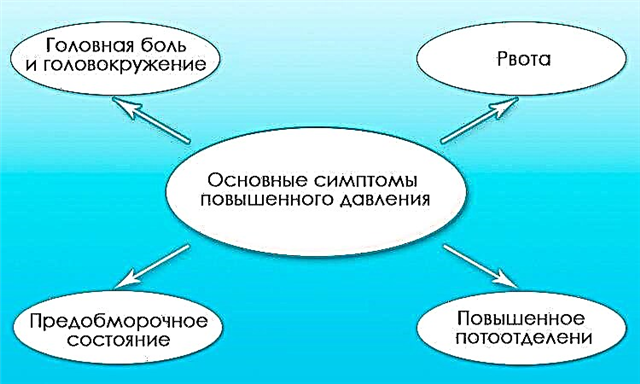Causes
 The occurrence of vasomotor rhinitis is associated with disorders of the basic functions of the vegetative part of the nervous system, which causes an incorrect reaction of the vessels of the nose to habitual stimuli. If vasomotor rhinitis occurs in children, the symptoms and treatment of the disease will depend on the causes of the nasal congestion.
The occurrence of vasomotor rhinitis is associated with disorders of the basic functions of the vegetative part of the nervous system, which causes an incorrect reaction of the vessels of the nose to habitual stimuli. If vasomotor rhinitis occurs in children, the symptoms and treatment of the disease will depend on the causes of the nasal congestion.
The onset of the disease is preceded by one or more factors:
- Infectious diseases are one of the most common causes of a cold. As a result of the past illness, stagnation of mucus in the nasal cavity may form, which will provoke the development of breathing difficulties and a runny nose.
- The use of certain medications. A runny nose in children can occur due to the use of various drugs, it can be anti-inflammatory drugs (Nurofen), drugs that lower blood pressure, as well as vasoconstrictor drops used for more than seven days.
Important! If vasoconstrictor nasal drops are used for too long, it can irritate the nasopharyngeal mucosa, leading to the development of rhinitis medicamentosa.
- Influence of environmental factors (prolonged inhalation of highly polluted air).
- Prolonged stay in a smoky room, in a room with pungent odors (varnish, paint).
- Excessive physical activity.
- Stressful states. It is known that in a state of stress, the pulse can increase, the movement of blood through the vessels accelerates, and the capillaries expand, which can provoke nasal congestion.
- A sharp change in ambient temperature and humidity, which can provoke swelling of the nasal mucosa.
- Congenital pathologies of the nasal septum.
- Changes in hormonal levels. Most often, such changes occur with problems with the thyroid gland, the development of a pituitary tumor.
- Eating too salty, peppery and spicy food is also a factor provoking the development of the disease.
Along with the above reasons, vasomotor rhinitis in children can occur as a result of severe hypothermia, exposure to allergens, and nasal injuries.
As a result of the influence of the above factors on the human body, there is a violation of the regulation of vascular tone in the nasal cavity: there is an expansion of blood vessels, their edema and an increase in size.
Symptoms
Most often, rhinitis symptoms occur in children aged six years and older. In the acute course of the disease, the following symptoms are distinguished:
- liquid mucous discharge from the nose, which appears periodically for no apparent reason;
- coughing and irritation of the mucous membrane of the throat due to the drainage of mucus along the back of the pharynx;
- sneezing caused by a large amount of liquid secretion from the nose;
- nasalness caused by complete or partial nasal congestion;
- problems with smelling;
- headaches, insomnia due to nasal congestion;
- general weakness, increased fatigue as a result of inadequate sleep;
- lack of appetite;
- increased sweating, lacrimation, swelling;
- with prolonged complete nasal congestion, ventilation of the lungs may deteriorate, there may be a lack of oxygen in the blood.
Most often, vasomotor rhinitis in a child, as well as in an adult, can cause congestion on one side of the nose or on the other, or swelling of both nasal passages can occur at the same time.
Treatment
 Treatment of vasomotor rhinitis in children should be carried out in a comprehensive manner. Effective therapy should include finding and eliminating the cause of the disease, drug treatment, and preventive measures. If conservative methods do not allow obtaining the desired result, experts recommend surgical intervention, which is most often based on the destruction and cauterization of the dilated blood vessels located under the nasal mucosa.
Treatment of vasomotor rhinitis in children should be carried out in a comprehensive manner. Effective therapy should include finding and eliminating the cause of the disease, drug treatment, and preventive measures. If conservative methods do not allow obtaining the desired result, experts recommend surgical intervention, which is most often based on the destruction and cauterization of the dilated blood vessels located under the nasal mucosa.
In the acute form of rhinitis, treatment is indicated, which will be based on eliminating the main symptoms of the disease and maintaining the child's immunity.
- Correct fortified food (fruits, vegetables), the use of immunostimulants (Imunoflazid), which will slow down the reproduction of pathogenic microorganisms, a large dose of vitamin C (about 300-600 mg per day).
- Use local antiviral and antibacterial drops and nasal sprays (Chlorophyllipt, Nazoferon, Derinat).
- To eliminate the symptoms of rhinitis quickly and safely, the disease can be treated by rinsing the nose with saline solutions (Aquamaris, Salin, Aqualor, saline) purchased from a pharmacy. You can prepare such a solution yourself by dissolving a teaspoon of table or food sea salt in a liter of warm boiled water.
- Use nasal preparations based on corticosteroid hormones (Flunisolid). Such drugs do not affect the overall blood flow, and unlike vasoconstrictor drops, they are not addictive with prolonged use.
- In case of allergic rhinitis, it is necessary to determine the cause of the allergic reaction and try to eliminate it; the local use of antihistamine sprays and nasal drops (Fenistil) is also shown.
- If the child's rhinitis occurs against the background of a respiratory infection or flu, it is necessary to provide the child with peace, give a large amount of liquid (teas, herbal decoctions, fruit drinks, fruit drinks, juices). It is necessary to regularly ventilate the room, carry out wet cleaning.
With the development of rhinitis and nasal congestion in infants who cannot independently get rid of excess mucus in the nose, it is necessary to use a special aspirator to effectively cleanse the nasal cavity.
- Rhinitis is often accompanied by crust formation. To soften them and effectively remove them, it is necessary to use vegetable oil (drop a drop of oil into each nasal passage).
- If the disease has become chronic, then children are often prescribed physiotherapy (electrophoresis, UHF, ultrasound).
- If the treatment of the common cold was not started on time or inadequate methods of therapy were selected, more serious cases may occur, accompanied by atrophy of the nasal mucosa, which may require surgical intervention. In this case, laser vasotomy of the nose is indicated.
When choosing one or another method of treating rhinitis in children, it is necessary to use the principle of grading - from safe and simple methods to more complex ones.
Vasomotor rhinitis is dangerous for its complications, which can develop against the background of low immunity, improper treatment of the common cold. The most common manifestations of complications are:
- the occurrence of chronic diseases of the nose (sinusitis);
- the appearance of polyps in the nasal cavity;
- acute otitis media;
- sweating, fatigue, low working capacity, headaches;
- snoring and respiratory arrest during sleep, which provokes the onset of oxygen starvation.
Traditional methods of treatment
If the child's disease is at an initial stage, then often therapy with folk remedies is sufficient to treat rhinitis. Most often used:
- water and oil solutions for washing the nasal cavity and softening the crusts;
- decoctions of herbs and essential oils for steam inhalation;
- infusions of medicinal plants to raise immunity, used internally.
As drops in the nose are used:
 rock salt solution (half a teaspoon of salt in half a glass of warm drinking water);
rock salt solution (half a teaspoon of salt in half a glass of warm drinking water);- a good antibacterial agent - juice of fresh onions or garlic, diluted with water or saline (one in ten);
- for the treatment of rhinitis, drops based on Kalanchoe or aloe juice are used (a couple of plant leaves are washed and squeezed out the juice, which is diluted with warm drinking water in a ratio of one to ten), instilling two to four pills five times a day until recovery;
- you can treat a runny nose with a mixture of beetroot and carrot juice (one to one) with the addition of sea buckthorn oil, a few drops of garlic and water (one to one);
- honey drops are a good antiseptic for the nose: take one part of honey and three parts of beetroot juice, instill the resulting product three drops five times a day.
Before treating children with folk remedies, it is important to make sure that there is no allergy to each component that is part of the recipe.
Rinsing the nose for children in the complex treatment of vasomotor rhinitis should be performed as follows: the child should tilt his head forward and inhale the medicinal liquid from the bowl with his nose, exhaling it into the sink. The procedure should be repeated at least five times a day. This procedure will allow you to remove a significant amount of mucus from the nasal passages, and increase the effectiveness of instilled drugs. To rinse the nasal passages, use a weak solution of rock or sea salt (small false per liter of drinking water), a decoction of chamomile or sage.
Steam inhalation for rhinitis warms up the nasopharynx, liquefies and removes mucus, and increases the absorption of drugs. For inhalation at home, use:
- baking soda solution (one tablespoon per liter of water);
- decoctions of medicinal herbs such as chamomile, sage, linden;
- beekeeping products;
- essential oils (fir, eucalyptus, tea tree);
- pine buds and needles.
For the procedure, a hot medicinal solution is poured into a kettle, deep bowl or steam inhaler, then covered with a large towel and breathed over warm steam. To increase the effectiveness of the procedure, you need to breathe correctly, inhaling alternately through the nose and mouth. The inhalation time is usually eight to ten minutes. After the procedure, you should stay at home, it is better to lie down in bed and cover yourself with a blanket, for better discharge of mucus from the nose, it is recommended to raise the pillow.
The use of any medication for the treatment of children, especially drugs that stimulate the immune system, must be carried out with caution and only under the supervision of a physician.

 rock salt solution (half a teaspoon of salt in half a glass of warm drinking water);
rock salt solution (half a teaspoon of salt in half a glass of warm drinking water);

